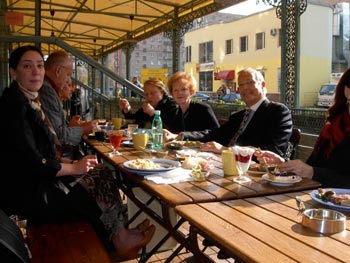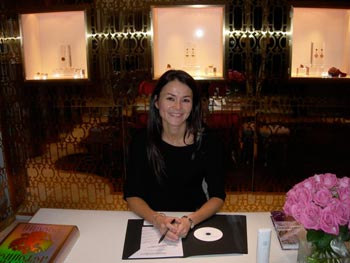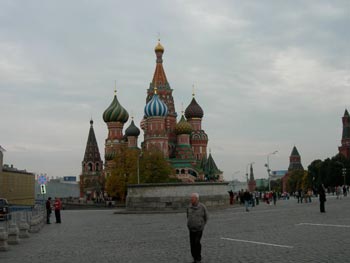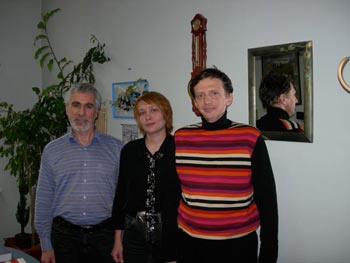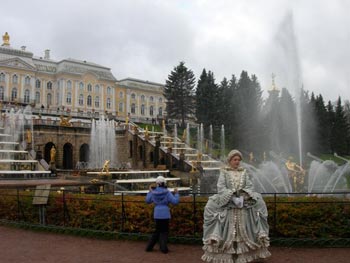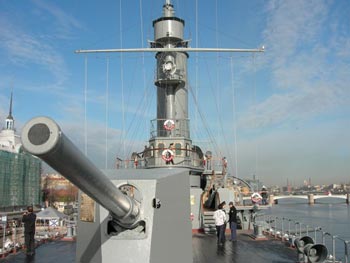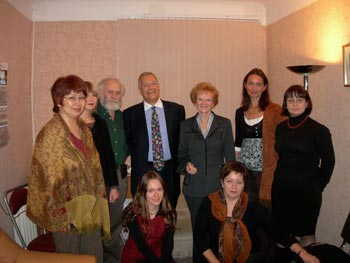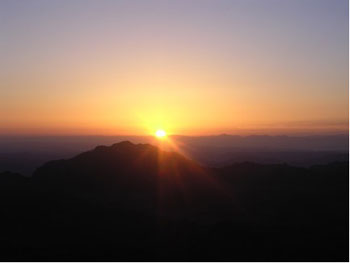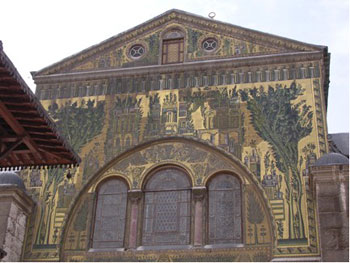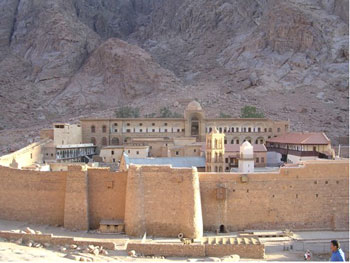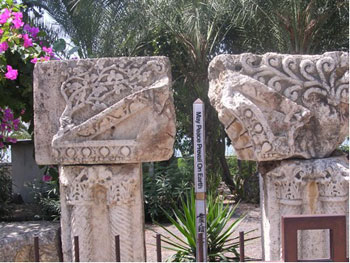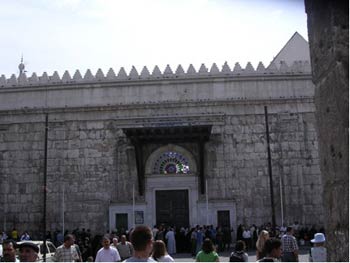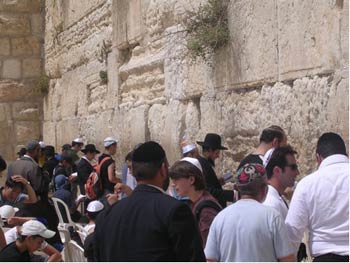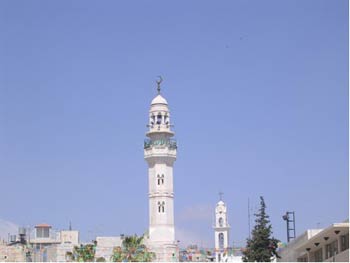IPI Emeritus Faculty
Tuesday 3/23 Mirogoane: Rendezvous with the Past
Today I go to Mirogoane again. But first I need to bring you up to date on something. When I returned the Iridium phone to Stephanie after the Platon beach party, I was about to leave when she said, “Oh, Kent, one more thing. I’ve been thinking about your wanting to meet your friends from your field site of years ago. There’s still a big security problem — another abduction for ransom, probably because the others were freed with a big pay-off. And there’s a rumor someone from another organization in Cap Haitian was murdered. I checked it with our top IMC security guy. We just can’t let you go to Masson, even with armed security.”
“Not at all?” I was crestfallen, and miffed. Just that day I had learned how old Stephanie was, just 30, and quite attractive, but not the girl of my dreams at the moment.
“Wait, Kent, I know how important this is to you, and you’ve really been doing good work, so I have an idea.”
“Shoot.”
“We’ve opened a new IMC Office in Leogane, run by my French friend, Alice. You met her. Why don’t you call her and set up a rendezvous at her new Office. That gets you to Leogane, an easy place for your friends to reach, and nobody in security can complain. Alice has a guard there 24/7.”
“Brilliant! Thanks for thinking of me. I’ll set it up, and check out Alice’s new mobile clinic program, and maybe introduce these guys to her. She needs people on the ground who know the Leogane area.”
I had despaired of ever seeing them. My heart began to sing. I jumped on the Internet, and…it was down. But the next morning I found the emails with the phone numbers of my friends from Masson — Pierre d’Haiti, Karen Richman’s foster son, and Charlie Fangala, her godson. Both of them surprised to hear from me, we set up a meeting for Tuesday, March 22, after my Mirogane Clinic. Then I realized I had a problem: Mirogane was an hour further out the southern peninsula, the opposite direction from Leogane. I crawled back into Stephanie’s office. Cars were at a premium. To my surprise, she said, “No problem. We’ll send a driver for you. I know how important this is to you.” I was grateful. She may not care about food, but she sure knows how to touch this guy’s heart. This army doesn’t just run on its stomach.
As long as I’m cleaning up my timetable, I should mention that Kathleen, Laurie, and Chrisie from Hopkins left on Saturday. Dr. Paul from Rush, his fascinating sidekick Alisia from Alaska, and Melissa from Canada, are all arriving Sunday. As a matter of fact, Melissa and Paul were reclining on our Residence portico when we got back from our beach party. Paul was all excited, talking up a storm, while Melissa, a new volunteer fresh off the plane Friday, sat there almost mute. Being a shrink, I announced what I did and finally asked her if she were perhaps a bit worried about what she was getting into. “My, aren’t we projecting, Dr. Ravenscroft,” she said, “are you always so nervous when you meet new people?” I knew I had met my match. Though quiet, she proved quite sharp, a doctor’s doctor, carrying the PDR and Merck Manuel around in her head. Everyone went to her for drugs and dosages. She also quizzed Tom mercilessly on latrines and water supplies. I listened—for a while.
Dr. Paul, on the other hand, showed his brilliance and sense of humor in other ways, some of which you already know. When I finally managed to get the lab to cough up my INR, he took one look at the numbers, as you know, and said they didn’t make sense, but hedged his bets by telling me not to cut back too much. He was totally on top of hematology and oncology, but daunted by tropical medicine. His nose was in a book a lot at first. Truth is, he worried about stuff we hadn’t even thought of. I was in awe of him. The only problem was that his last name was Kent. So every time somebody called for Dr. Kent, we both answered, and it drove him crazy. But he was flexible, and agreed to be Dr. Paul in Haiti, using his first name like the rest of us. I was there first, anyway, and had secured the high ground. People at Rush will wonder why he doesn’t respond to his name when he gets back. He was also rather selfless, giving up his bed upstairs when new staff arrived. He pitched his little pup tent. Where? Right in the front hall. I felt sorry for him sleeping on the concrete floor, so I loaned him my cushy air mattress.
Dr. Paul seemed so kind and jovial most of the time, until one evening our Nutrition Program nurse got us to play a fast-paced word guessing game. Then his killer instinct came back out. He gloated when we stumbled around and the buzzer nailed us, and hooted when he won. But I’d put my life in his hands anytime. He had a heart of gold. He brought two big duffels in addition to his suitcase, one filled with toys, the other with soccer balls and sports stuff, and all to be distributed at his clinics. Only someone ferrying them from the airport misplaced them, and only the soccer balls showed up. He prayed Haitian kids got all the toys, and not the black market.
What does our cook look like? Sweet Crystal is a pleasingly plump, cherubic young woman who floats around in a fugue state, her faced laced with a perpetual pout, rarely cracking a smile. Talking to her is like dealing with a somnambulist. She pretends not to understand my Creole and still ignores Jattu, our proud delegate. I felt like leaving the doors bolted. But I thirsted for our next skirmish in the Crystal wars. Anything to keep my mind off the sadness of facing our clinics. Working in Haiti calls out my gallows humor. I hope you don’t mind. But don’t be deceived. It’s the underlying deadly seriousness of this place that fuels our seemingly innocent by-play.
Only the ‘disaster junkies’ thrive on it, as my slightly cynical journalist friend, Jim Srodes, calls them. (If this hot topic is not your cup of tea, jump ahead four pages.) They are a special breed within the echelons of disaster relief workers—a distinctive but elite few. These are the folks who move from disaster to disaster with their NGO’s, fueled by the high-octane adrenaline rush of each new catastrophe. They even hop from NGO to NGO, if necessary, to find a new stable, any stable, to feed their addiction. Often consummately good at what they do, they never seem depressed or discouraged, buoyed by the intensity of the situation. Their anti-depressant? Feeding on the tragedy of the displaced and downtrodden. These ‘disaster junkies’ all seem to know each other, and are familiar with each other’s organizations, inside and out. They don’t need a flow chart, having in their heads where they stand in the NGO pecking order. They speak of first tier and second tier NGOs without losing a beat. If one disaster peters out, or their funding folds, they are nimble at organization-hopping, showing up to join their buddies at the next dramatic scene, raring to go.
This is both good and bad. Part of the good is their high level of knowledge and experience with the disaster relief life (and death) cycle. A well-orchestrated jostling dance always unfolds among these NGOs, those of the unfortunate host country, and the destitute indigenous population. These disaster clients, helpless hungry, thirsty, homeless, and always grieving, are dislocated into tent cities, needing and demanding everything yesterday, while the news media, like sharks feasting on blood, descend on the worst case scenarios to find tender fault lines in heroic relief efforts. And, admittedly, aid is spotty, halting and inadequate, faced with the widespread enormity of these situations. But these NGO’s, who have been brave and professional enough to step into these chaotic seething vacuums, somehow are able to create out of thin fetid air rather amazing life support systems, virtually breathing for their agonized ‘clients’. They go about this in a well-oiled, though outwardly disjointed-looking fashion, almost running on fumes at first, but often with generous initial compassionate funding, from a stunned world audience, who soon prove fickle, moving themselves to the next touted disaster, itself like a “public disaster junkie’, obedient to the next featured world catastrophe. Mindlessly enthusiastic, they fade on the previous disaster, and let their pledges dwindle. Their governments, despite high-sounding initial resolve, often let their pledge dribble to default. The NGO professionals are left orphaned, destined to fend for themselves, burdened by their newest traumatized public wards, while still taking care of all the other disaster populations already in tow, but now long forgotten by the world. Oh, the tree huggers and the liberal young periodically try to recall to the public eye this bloody trail of relief efforts, crying shrilly and pointing Darfur fingers, while we all eat our foie gras and sip our wine in front of our telies. One of the positive bottom lines here is that NGOs know this fickle disaster cycle well. Recognizing the disgraceful public mind and the thirsty news media, they try to work their own emergency media magic to pump and reap the windfalls of these copious initial disaster moments, valiantly trying to fill their coffers with transient heartfelt outpourings, creating a precious reserve for their past and future obligations, storing nuts for the long winter. Understandably they must quietly siphon off some of the transient bounty to feed their ongoing forgotten relief efforts, while laying away some nest eggs for the next mass disaster. The pump must be primed, and the NGO funding nourished.
As a tragedy unfolds, they go about their work with a rugged, time-proven efficiency, rapidly clustering and coordinating, seeking mutual NGO support and collaboration, finding and sharing resources, seeking solace, (and even romance and love) with and from one another, while they expose themselves and reach out progressively to the shredded governments and indigenous populations. The NGOs are whipsawed, blamed for not being deeply, sufficiently and assertively engaged, while being faulted for being overly intrusive, invasive and arrogantly taking over. In the face of this indigenous torrent of needs and complaints, all well-known to them from each past disaster dance, the NGOs respond in a mutually sustaining, mature measured fashion, transmuting the angry heat of these expectable complaining encounters into a cooperative energy increasing multinational collaborative teamwork. Through this process, they identify regional needs and priorities, so that local governments, their own NGO’s, and all the foreign NGO’s can work in increasingly sustainable concert. This expectable maturing of any given disaster cycle happens over and over again, from disaster to disaster. These NGOs know it, have been through it before, and know that it will happen again. They are wise enough to know there are no short-cuts, but only seasoned pacing and patience, trusting all will pay off in the long run—if the money doesn’t run out.
On the other hand, because ‘disaster junkies’ are so seasoned, so hardened, so inured, living off their adrenaline high, and because they are so ingrown with each other, they may become cynical and forget what it feels like for new staff and new disaster clients. This can lead to a lack of empathy for these newcomers. And to a jaded feeling about their fickle public benefactors.
Living this kind of high octane life, often flying high on fumes, disaster junkies are prone to two kinds of problems: they run the risk of never settling down, never taking on the commitments, the trappings and anchors of more normal life, living a myopic nomadic existence, finding friendship and love on the fly with recurrent NGO’ers who, because of this unique life-style, can share their unique mentality and shoptalk, the only constant people in their intense, hermetically sealed universe. Living this kind of life results in a special set of values, unique points of view, and a stunting of one’s own life trajectory and prospects. If they mature in NGO office, they lose outside family and friends, miss important family life and events, and the maturity these bring to leaven the heart and soul. Though a hardy few have the capacity to keep up with their family and friends, and insist on taking trips home–and even vacations–others harden, wither and die in office, warped by the generosity of their dedicated disaster giving. They have saved, and given life to, so many while starving themselves to death, not to mention their families back home.
Why are people attracted to this life style? Is it something about them? Or something about what happens once they get involved? Is it in their genes, or is character destiny? Or, does disaster work shape and distort character? We use the words ‘disaster junkie’. That’s an addiction metaphor. But their ‘adrenaline high’ is not just a metaphor. It actually exists, and plays a role we all know, as it does for gym-freaks, professional athletes, dancers, actors, and gamblers. Yes, there is something addicting about this work—the compassionate circumstances, the noble calling, the good works, the public support and honor, the media accolades (and diatribes), and the sleek, simplified fighting life style, with the aura of a noble calling, all justifying expedient decisions, and a life of deprivations and excesses,. In short, the mentality of a holy war crusade.
The bottom line here is that it is a magnificent life-style that is discernibly distorted. But where would we, and the tragic destitute be, without them. They are in the same category as saints and martyrs. Translated from the Scots’ toast I’ve heard from Jill, I salute them: “Here’s to you! Who’s like you? Very few, and they’re all dead.”
But how do our revered ‘disaster junkies’, or even our more average disaster relief workers, staff and volunteers, learn necessary survival skills and sustainable self-care? Most organizations, and especially IMC, stress this, and provide professional prescriptions for training them, essential to their personal and professional longevity. Otherwise, they suffer the other major casualty, that dread condition of NGO burnout. We might call it the NGO Phoenix Phenomenon–as disaster junkies fly blindly towards the sun, seeking the bright high of disasters, until their wings, made of mere mortal flesh melt and burn from their arms, and they come crashing to ground, no longer a disaster star, but a black tragedy of their own making. As they suffer this flameout, they often bring down others with them, and even their organizations. People around them feel their personal and administrative decrescendo, the spiraling decay of their gyre, and wonder how they can help, when and if they dare to tell them to take leave, lest their behavior result in their underlings taking leave of them. These phenomena are well known to everyone on the inside, and yet often overlooked or delayed until it is too late.
I am not, or only partly so, talking about my beloved IMC. I care for this dedicated group, have seen the best of what they can do, and yet have seen some hints of the above phenomena, just enough to get the hang of it, and then to use my Hotel Royal connections, to discuss these ideas with friends in other NGO’s, and then to spin some of my own thoughts into whole cloth. I could be wrong, I could be making a lot of this up, but I must tell you, it is food for thought, even for my beloved IMC. Physicians must heal themselves, that they may be whole and full of life, and in good enough health for healing others. So on with my story.
At the Mirogane Clinic, for the second time, our first patient, 29, talked of his profound sadness and recurrent thoughts of killing himself. As he spoke, he seemed to be swallowing his tongue. He told of being unable to work for the last 8 years, but still hoped to pursue his dream of running a business. His speech was so garbled we had to stop him, asking him to open his mouth. His tongue was chewed into a large bulbous cauliflower. “How did that happen?” we asked. “Every time I have an attack, my neck and head go into spasm, my jaws clench, and I chew my tongue–maybe two or three times a week. The only thing that stops it is 5 pills of ‘Akineton’. But what the hell is Akineton? I thought. What could this be? He doesn’t fit Lesch-Neyhans Syndrome. Dr. George and I were stumped. It sounds like a dystonic movement disorder, or maybe a seizure? We pressed on. His life had gone well until he was 20, but he had never worked after that. “What happened back then?” we asked. “I became violent, got in fights, had to leave school.” “Then what?” “I was hospitalized.” “Were you thinking everyone was against you, maybe even hearing voices?” “How did you know? Yes, it’s painful to remember. But thank the Lord it never happened again. Ever since then I’ve had these attacks and am too depressed to work.” Suddenly we had our diagnosis, Paranoid Psychosis sad to say. I whispered, Tardive Dyskinesia to Dr. George, and his eyebrows went up. It’s that dreadful permanent side effect of the neuroleptic anti-psychotic drugs they gave the man to cure his paranoid psychotic break. Dr. George said, “Don’t ever use anti-psychotic drugs again, and look, this kind of condition tends to go on, but we can help you manage it better. We think you ought to try taking an anti-dystonia (anti-Parkinson) drug regularly, and see if we can cut the attacks way down, which would help your situational depression and give you a chance for your dream. Try Kemadrin daily, and come back next week, tell us how you’re doing. You can hold on to your Akineton in case you have a full attack. He was slightly encouraged for the moment, and we were guardedly hopeful. This is a tough situation. If this didn’t work, we would try Carbamazepine, in the off chance an anti-seizure med would help these myoclonic attacks. I have been noticing that we’re attracting more chronic patients now, while seeing fewer acute quake-related cases.
The next case, a 25-year-old woman fit in with this idea. Trying to purse nursing, she had had three psychotic breaks, each at stressful career junctures, treated with Risperidone. Now she seemed flattened. Not quite catatonic, and surprisingly confused. She repeated our questions 8 or 9 times and kept saying, “They’re coming to get me.” She had lost her meds, and psychiatrist, in the earthquake. For her serious psychotic paranoid depression we gave her Carbamazepine, but she refused any Haldol because of massive weight gain. If you are wondering why you keep hearing about the same medications over and over again, it’s because we only had available one or two drugs in each category, and some–like Carbamazepine (Tegritol)–are good for both bipolar and seizure disorders. We’re realists, not just Johnny-one-notes trying to fit all our patients to one label.
After we saw a 51-year-old woman with a classic depression, treated with Amitryptilene, we met a bright-eyed manic woman with a paranoid tinge coupled with fleeting visual and auditory hallucinations who jabbered at us a mile-a-minute. We gave her, you guessed it, Carbamazepine. You’re getting good at this, and so was our Haitian general practitioner. What really helped, though, was our follow-up clinic, where we could see any improvement and adjust meds as needed. This lady, though still a little high the next week and wanting our names to thank God in church for us, was in fact cooling off, with no voices and visions, and now eating and sleeping better. We were thankful too. We upped her Carbamazepine a little. Close follow-up is both instructive and reassuring for us all.
Our last patient at the age of 14 was still in first grade. He was pestered by his mother and teacher who wanted him to progress. A handsome lad, he was embarrassed and miserable, and yet a little cocky still. His older brother had the same problem, and finally, when she admitted it, so did his mother. But she said she had to endure school so why shouldn’t he? We talked heredity and common sense, suggesting he was a smart proud boy, not too damaged yet, with clear circumscribed troubles with reading, writing, and arithmetic. So, instead of wasting his time with intellectual challenges he could not meet and ruining his confidence, he (and they) should make a bold, pre-emptive move and seek out some good interesting apprenticeship, find his calling, and get a jump on his life’s career. He would do well. A smile crept over his face, and a light bulb went off in mother’s head. We said goodbye and wished them well.
Coming up for air, I looked around. Where was he, our jovial alcoholic? I had really hoped he would meet our challenge and come back to see us, ready and competent for a more thorough evaluation. But he was nowhere to be seen. I was disappointed but not surprised. I wasn’t very effective with alcoholics. Only a few people I know really have the knack, and maybe not in times like these. I tried not to be too hard on myself.
Today was a lighter load and thankfully went quicker. I had a very important date to keep. The driver was already approaching me when I called Samedi. He and I had had a heart-to-heart early that morning, and he knew how important my rendezvous at Alice’s Leogane headquarters was to me. He knew of all the friends I had lost there in Brache and Masson, my old field site, and how eager I was to meet Pierre d’Haiti and Charlie Fangala. I had so despaired of making any contact that this breakthrough opportunity made my heart sing. I was so lost in fantasy I was surprised when we got to Petit Goave in record time. I realized I’d be too early in Leogane, so we cruised by Stephanie’s office, landing at the Residence. Crystal was shocked to see me out of the blue, and even better I found uneaten lunch sitting on the table. Though I couldn’t figure out who it was for, possession is nine tenth of the law and I dug in. This was turning out to be a good day. I woofed it down in 15 minutes, grabbed a few things, hopped in the waiting Patrol car, and we hot footed it on to Leogane. And I was blind-sided. First by a call from Alice, “Are you still coming today? Oh, okay, but they’ve called me to a Leogane NGO meeting so I won’t be there when you arrive. The guard knows you’re coming.”
As we approached Leogane, it all came back, erupting into my head and heart as I saw all the destruction. When we had driven through the outskirts of Leogane after Brache on the way to Petit Goave, it had registered then, but went by in a flash, or was deep-six’ed by my mind. But now it flooded me. Because we were lost at one point, and went deeper into the heart of Leogane, I couldn’t avoid the awful truth. I had been told that Leogane, the epicenter of the earthquake, had been 90% destroyed. And it was true. Everywhere I looked, I saw collapsed buildings. Because the driver had never been to the new office, in a building just leased and set up by Alice in the last two weeks, we wandered around town exposing me to far more than I had expected. Though some spotty clean up had begun, the place was a wreck, and tents of every type and description were everywhere. Though half the population had died or fled, the city was teeming with people, women doing commerce, their brightly colored stands dotting the roadside between piles of refuse and broken walls, with goats, pigs and chickens hunting and pecking for anything they could find. Dogs scavenged everywhere, dodging brightly colored camions piled high with sacs of produce and charcoal, with people perched on top of that. Life was everywhere, and death was buried beneath. For all the world it was like a city gone crazy, more like a New Orleans funeral than a dirge. I was wracked with feelings, ranging from sadness to admiration. How could they do it? But how could they not? Life had to go on, even in the midst of death and destruction. I had become so used to things in Petit Goave that this hit me like a ton of bricks, almost literally.
The only thing that buoyed my feelings was the prospect of seeing Pierre and Charlie—if we could only find the place. We were a little late, and I worried they might be waiting. I had told them the address during my original calls, but now that I saw how hard it was to find, I was also worried they’d never find it. What if I came all the way to Leogane and never saw them? My driver finally rolled down his window, hailing a local guy on the street, “Hey, bossman, where is the new NGO IMC Office. We know it’s nearby?” “Just take a right down there beyond that huge sign.” I looked out the windshield at a fat 30-foot pole going out of sight. Peering out the side window, I could see it was holding up a huge empty billboard. Halfway down the side street, the driver began honking, their usual drill to Open Sesame. On cue, this big red wrought Iron gate slid open and a uniformed guard with cool shades and an ugly sawed-off shotgun stepped out to face us. Seeing the white Nisan patrol car bearing down on him, he waved. Alice had tipped him off. We arrived and I hopped out. The place was deserted. I asked the guard to call my friends with the directions. Meanwhile, I had something very important to do. I knew Alice was French, and not a vegetarian, so would have her cupboards well stocked. I ran back, almost salivating. I was right. Out came the peanut butter and jelly, and some crackers to indulge me. I hadn’t realized how pent up I was. Then I pilfered her cabinets for all the power bars, peanut butter crackers, and cookie packs I dared take, stuffing my handy fanny pack. I knew she had four new medical volunteers to feed, but I had four myself. Paul, Alisia, Melissa and Dr. Alice would be ecstatic—if Tom and Jattu didn’t have at them first. I had already done my damage.
Just then I heard the volunteers arriving, surprised to see only two. And people I knew, my Barbancout buddies from Petit Goave. “Where are Kathleen and Laurie?” “We had a terrible gas explosion here last night, and she caught it full in the face. She’s gone to Port-au-Prince to be evacuated. Kathleen went with her.” “How bad off was she?” “She had second-degree burns on her face. Her hair and eyebrows were singed off, and she was blown back against us. Some guy installed it wrong. She was traumatized, but I think she’ll be all right. We all were.” Now Stephanie’s constant worry about gas made more sense. I should have known, since my wife and I had some trouble with gas in our place in Fanghetto. Maybe that’s why the Italians call the gas cylinders “bombolas’.
Just then I heard Pierre and Charlie arriving. Pierre was older, a dignified young man with a great smile, and warm charisma. He had started a school nearby, and even built a residence for disadvantaged children in the Leogane area needing education and lodging. The residence had been damaged in the earthquake. He had started a fund-raising tax-exempt foundation for his work, and had been able to pick up a nice property with a warehouse-like building on it, and was hoping to rebuild the residence. Charlie, a bright attractive younger guy had lost his job in the quake, and was looking for work. To my surprise, Pierre had a very successful high-end carpet installation business back in Virginia, and after installing carpeting for the Red Cross headquarters got to know the president, who gave him a nice donation. “I’m sure I can’t match that but I have something I brought from Paris for you and Leogane.” I pulled out my billfold, and gave him $240 US dollars. My wife and I wanted you to have it.” “Thank you very much, Kent. We’ll put that to good use.” Then I turned to both of them, “I don’t know what will come of this, but I hope Alice comes in while you’re still here. She may be hiring for various things. She also needs to know people she can trust who know the Leogane area.”
At this point I brought out my MacBook to surprise them with pictures of Masson some 50 years ago. Little Tonio and Elminar, kids of Joselia and Ternvil, the voodoo priest I stayed with, would now be in their fifties–their parents and grandparents long gone. Thinking this, my eyes moistened, not just for them but for the countless people now dead because of the earthquake. They saw me get quiet, with a tear running down my cheek. We shared a moment of silence together, than talked of the devastation in Brache and Masson. They said it was just as well I didn’t come see it because it would bring me even closer to so many sad losses.
We all looked up when we heard Alice coming, accompanied by another familiar face from Port-au-Prince, Mbassi, now second in command for the three new mobile Clinic start-ups in Leogane. Gressier was now placed in their ballywick. Pierre and Charlie were glad to hear about medical care outreach finally coming to their area. And Alice was glad to meet them, and promised to see what she might do with their help. Though less immediate a homecoming than I had hoped for, I felt my most important private mission in Haiti had been accomplished, and with Stephanie’s and Alice’s blessing. The only big remaining question mark was my little sponsored three-year-old, in the preschool outside of Port-au-Prince, a question that might remain unanswered. But I was grateful for what the day had brought me. Except for one thing. As I was waiting for Charlie and Pierre to arrive, my camera fell out of my fanny pack and broke on the ground. I wasn’t able to take pictures of them, or anything else on the trip. I was beginning to feel jinxed—now down my glasses and my trusty camera. But one thing I did have was a feeling of gratitude toward Stephanie. Originally I had been quite down on her around not allowing me a visit to my field site at some point. But all things are relative, and as I came to fully inhabit the risky world we were living in, I found myself deeply moved by her finding a safe, realistic way for me to see my Leogane friends.

